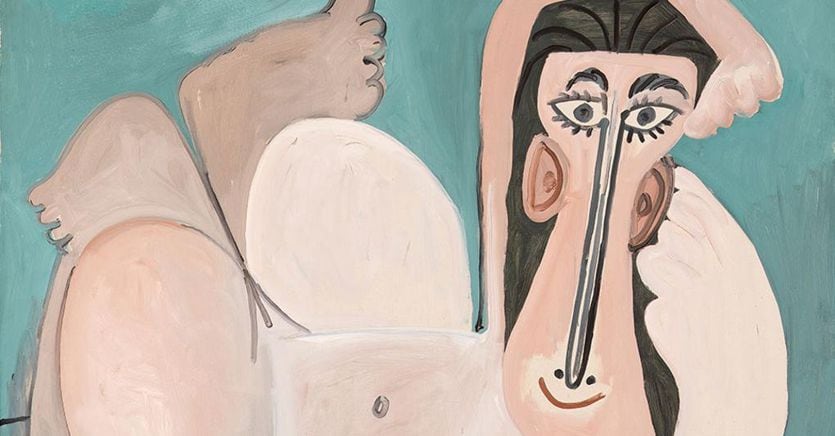An interior journey for the painter that will take him far beyond the search for pure beauty, and far from the rigid rules of perspective and the canons of the academy.
In particular, Picassian primitivism, in the dizzying creativity of this author, draws ravenously from the plastic language of Africans as well as from Neolithic and proto-Iberian examples, from oceanic art, as well as from the black figures of Greek vases to reinvent itself in volumes now broken down into massive forms tectonics, now in biomorphic hints, in the name of impudent eroticism and majestically brazen poses.
Leaning nude from 1961
A wonderful example of such a revolution, which breaks down the forms, in particular those of the female body, making them erotically irreverent, according to a categorization which highlights what the author sees and imagines, and not what mimesis would like, is the beautiful Leaning Nude of 1961. This little-known painting, coming from the collections of the Picasso heirs, faces the viewer with very large eyes, abnormal ears and a nose that is a whole program, drawing liberally from the African masks that impressed him so much at first, for then becoming his signature and the first indication of a poetics with revolutionary results.
The Naked Woman
This is therefore how La Femme nue, coming from the Milanese collections of the Museo del Novecento, an essential prelude to Picasso’s masterpiece Les Demoiselles d’Avignon, is but a sublime example. At the opening of the exhibition are the unmissable preparatory drawings of the famous “prostitutes” themselves: an unmissable event for visitors and scholars, as well as an exceptional delight on display.
On the occasion of the exhibition, 24 ORE Cultura published the catalog “Picasso. The metamorphosis of the figure”, together with the monographic volume “Pablo Picasso”, from the series “Una vita per l’arte”, edited by Francesco Poli.
